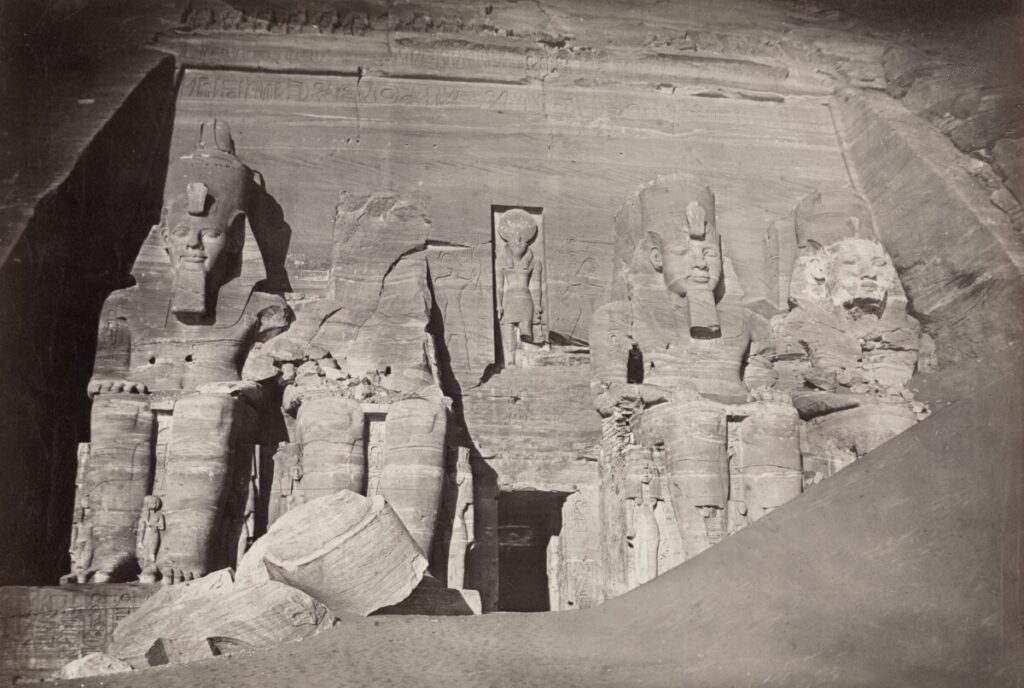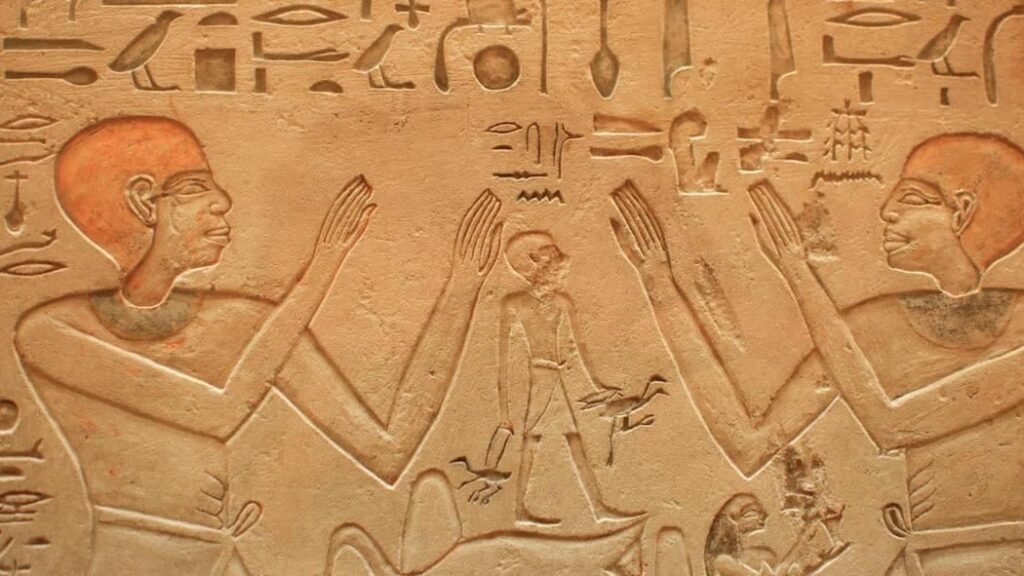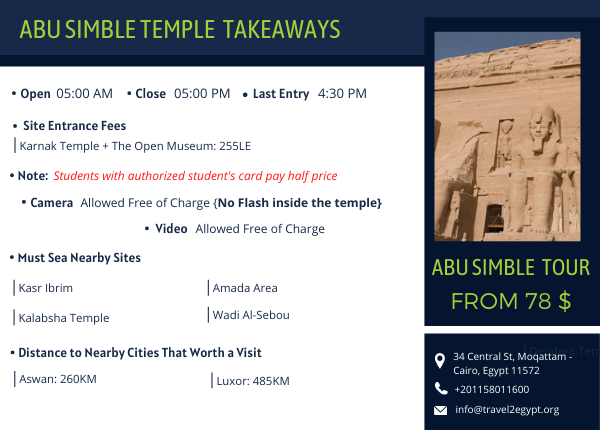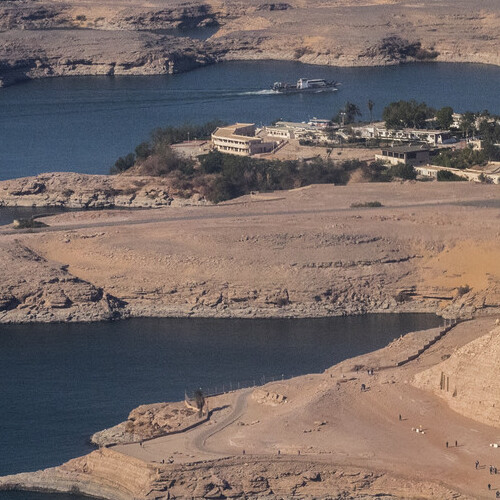The Great Temple Of Abu Simble
The Great Temple Of Abu Simble: A Monument to Pharaonic Grandeur
The Great Temple Of Abu Simble, dedicated to King Ramses II, stands as a pinnacle of ancient Egyptian architecture and artistry, captivating travelers with its majesty and historical significance.
Among many attractions that a traveller can enjoy in this area, The Great Temple of Abu Simble which belongs to the famous King Ramsses II comes on the top of the list, followed by The Small Abu Simble Temple which was built for his beloved wife Nefertari.
Majestic Entrance with Colossal Statues
- Statuary Grandeur: At the temple’s entrance, four towering statues of Ramses II, each about 66 feet tall, greet visitors. These imposing figures, carved from stone, display the Pharaoh in various stages of his life, symbolizing his enduring legacy.
- Symbolic Representations: The statues’ bases feature carvings of key figures from Ramses’ life, including his chief wife Nefertari, his mother Tuya, and several of his numerous children, signifying his familial and royal connections.

Temple Facade and Interior Design
- Artistic Facade: The temple’s facade showcases Ramses II venerating Re-Horakhty, the falcon-headed sun god, accompanied by carved baboons. This entrance sets the tone for the temple’s divine and royal theme.
- Hypostyle Hall: Inside, the first hypostyle hall is supported by Osiris pillars and adorned with scenes of Ramses’ military victories, notably his triumph at the Battle of Kadesh.
- Symbolic Crowns: The statues flanking the entrance depict Ramses wearing the white crown of Upper Egypt and the double crown symbolizing his rule over both Upper and Lower Egypt.

Deeper Exploration: Antechamber and Holy of Holies
- Antechamber Insights: The antechamber, supported by columns with carvings of Ramses and Nefertari performing religious rites, leads to various storerooms holding ritual items and tributes.
- Sacred Inner Court: Mirroring the concept of a holy of holies, this innermost area features depictions of gods such as Amun, Ptah, Re-Horakhty, and Ramses himself in divine form.
- Celestial Alignment: Remarkably, the temple aligns with the sun such that its rays illuminate the inner court on February 22nd and October 22nd each year, a phenomenon likely imbued with spiritual significance.
The Temple's Broader Role
- Cultural Influence: The temple’s grandeur and intricate decorations, depicting Ramses as a celestial ruler, were likely intended to awe the Nubian populace, reinforcing his divine status and ensuring their allegiance.
The Great Temple of Abu Simbel, through its architectural magnificence and rich symbolic representations, not only honors Ramses II’s legacy but also provides an enduring window into the religious and cultural dynamics of ancient Egypt. For visitors, it offers an unforgettable journey into the heart of Pharaonic splendor.
Embellishments and ornaments adorn The Great Temple Of Abu Simble and depict the majesty and divinity of Rameses who was considered a celestial Pharaoh. It is likely that these embellishments and the aggrandizement of Rameses served to keep the Nubians in awe of their king and to make them submissive and obedient to his rule.

Created On March 16, 2020
Updated On January 24, 2024



